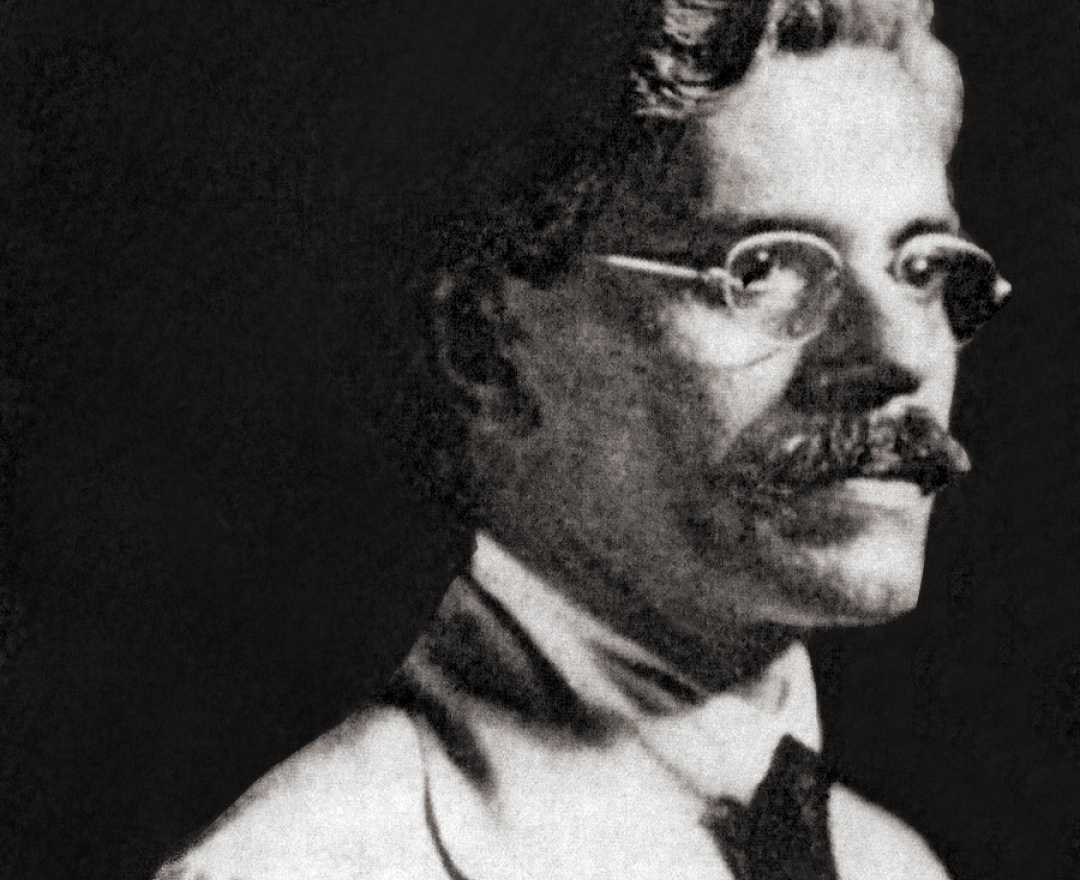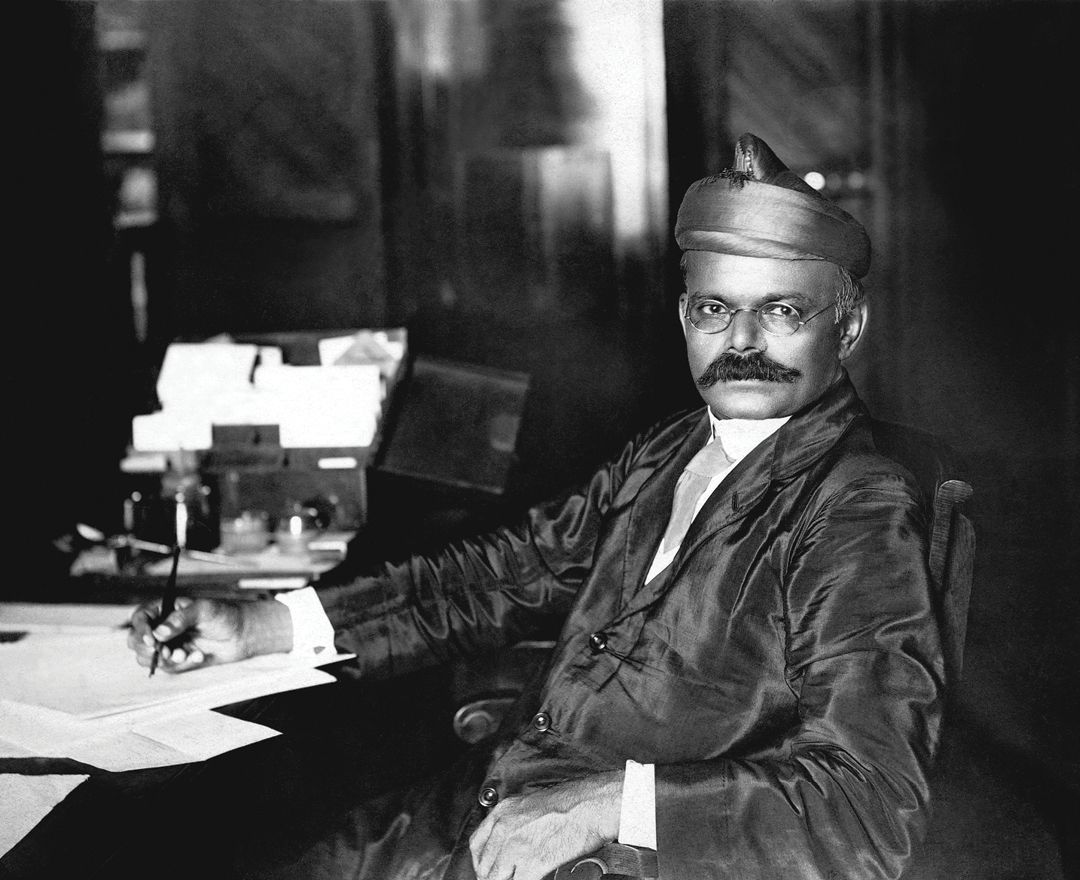1878
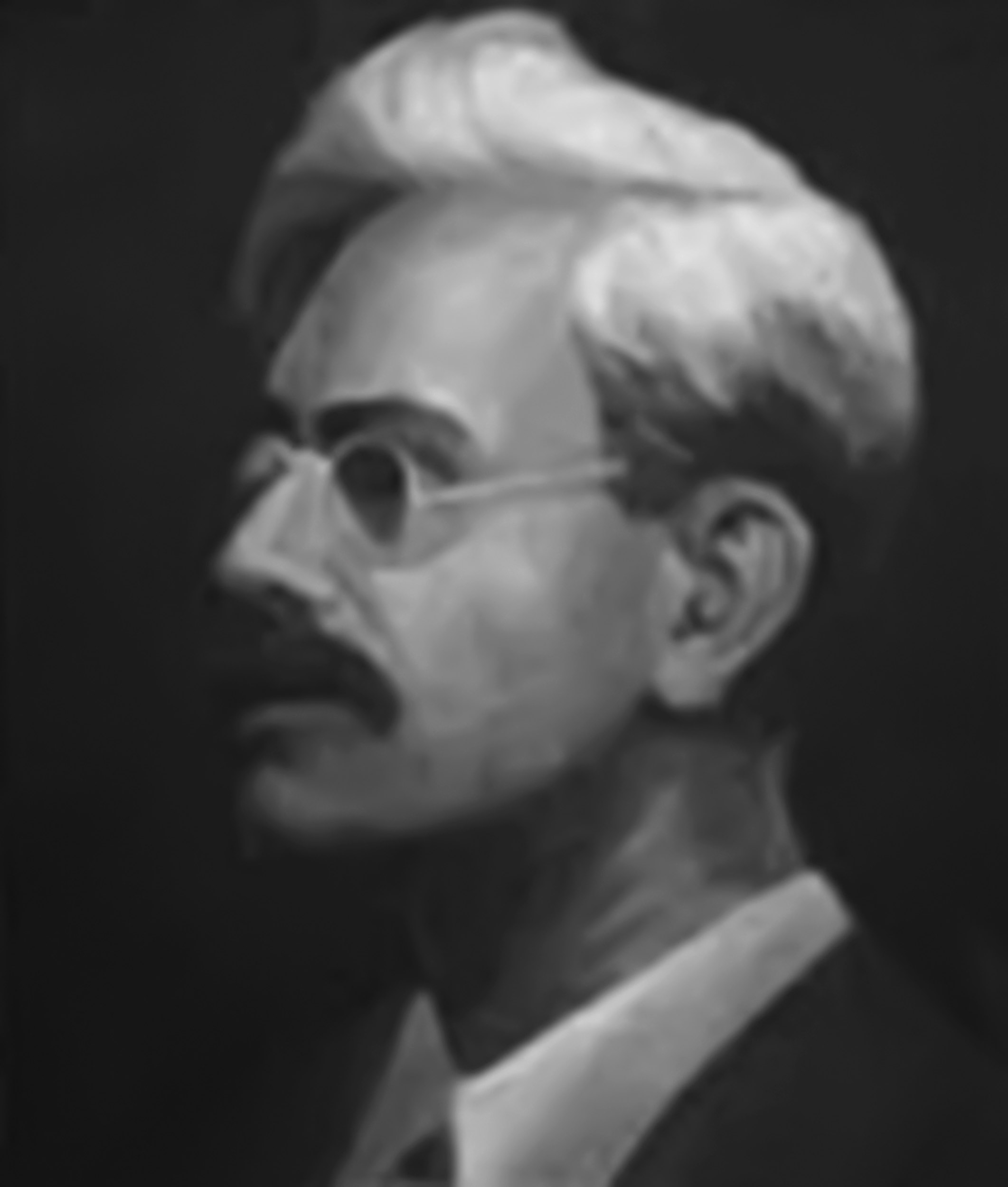
Born in Cochin, Kerala, to a German father and Indian mother.
Shows an early interest in the arts imitating figure drawings on paper. Draws portraits using family members as models, and then takes to memory drawing.
1900s
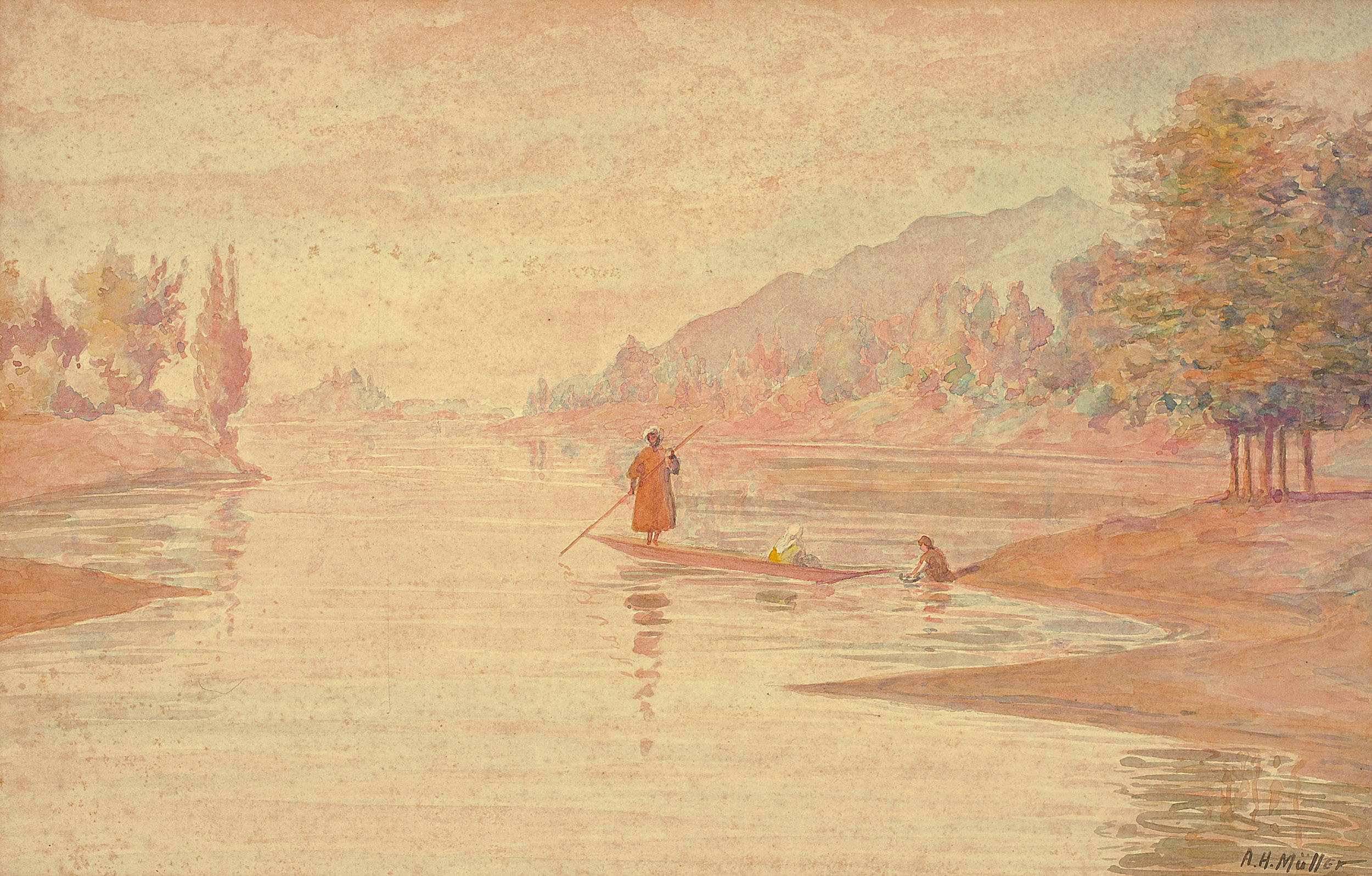
Joins the Madras School of Art; obtains first position in memory drawing examination.
Works in his brother’s photographic studio in Madras.
1910
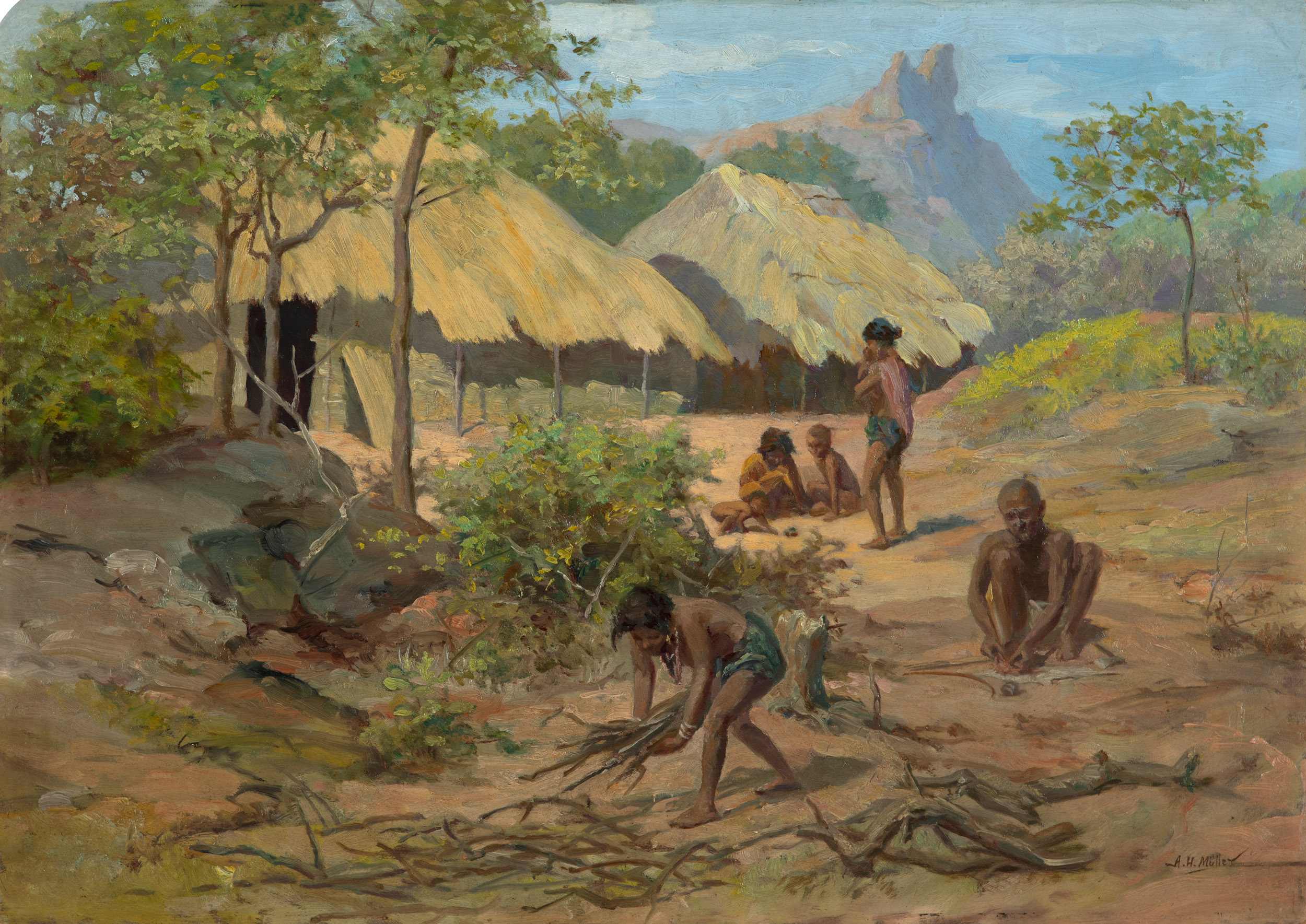
Moves to Bombay, after having spent time in Hyderabad and Poona. Soon gains employment with Messrs. Hate & Co. on a monthly salary of Rs. 500.
One of his early paintings, Dashrata Kaikeyi Vilap, is replicated in print by the Ravi Varma Press.
1911
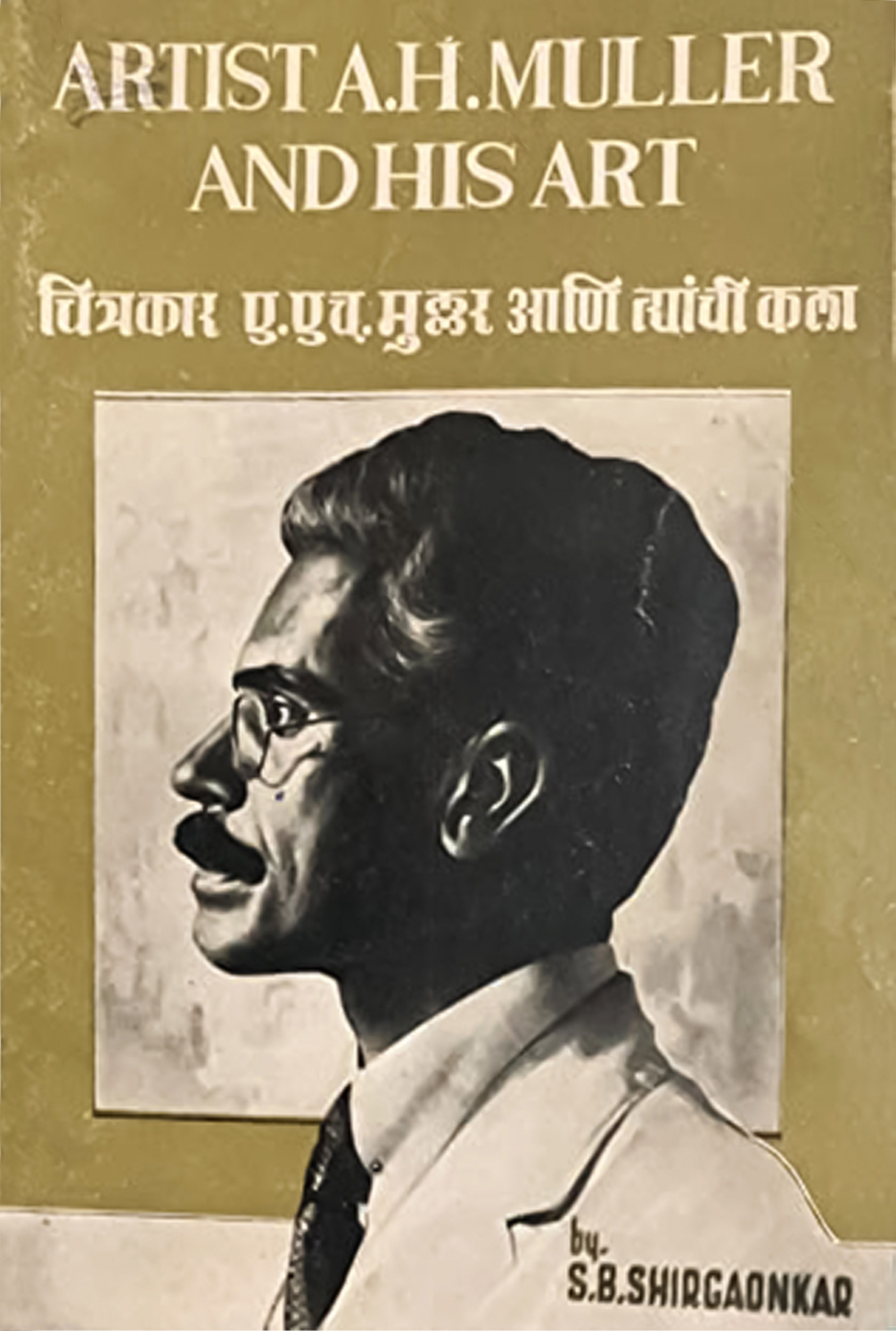
Wins a gold medal as award from the Bombay Art Society for his work, Princess Giving a Gift to a Brahmin Boy.
Faces financial difficulties, having advanced loans to friends; loses his job as the company he is employed at closes.
Lives frugally, taking on odd jobs—his residence is at Suratwala Building, Frere Road, Bombay.
1912
Wins the Governor’s prize for his work, The Naga Princess.
In the years and decades that follow, Muller receives acclaim for his works based on Hindu epics, and his depiction of court-scenes and glimpses into royal life in India.
1914
Joins the Indian Reserve Force during the First World War, enlisting in a pool of Anglo Indians, Goan Christians, Jews et cetera. Trains under an English sergeant-major.
Paints his regiment in caricature style, the watercolour work A Difficult Proposition, including himself and a perplexed sergeant-major in the composition.
Studies the Ramayana, paints based on episodes from the epic. His decorative, watercolour painting of Shroopnakha is purchased by The Times of India and reproduced in the The Illustrated Weekly of India.

Influenced by the works of Raja Ravi Varma, Müller’s works display a classical or Graeco-Roman understanding of the body posture. Much like the works of Dhurandhar, the human figures are placed in grand settings of court or in a stylised visual tale.
1922-27

Receives a job offer from Maharaja Ganga Singh of Bikaner. Frequently accompanies and sketches the maharaja on his hunts; also paints from photographs captured during the hunt.
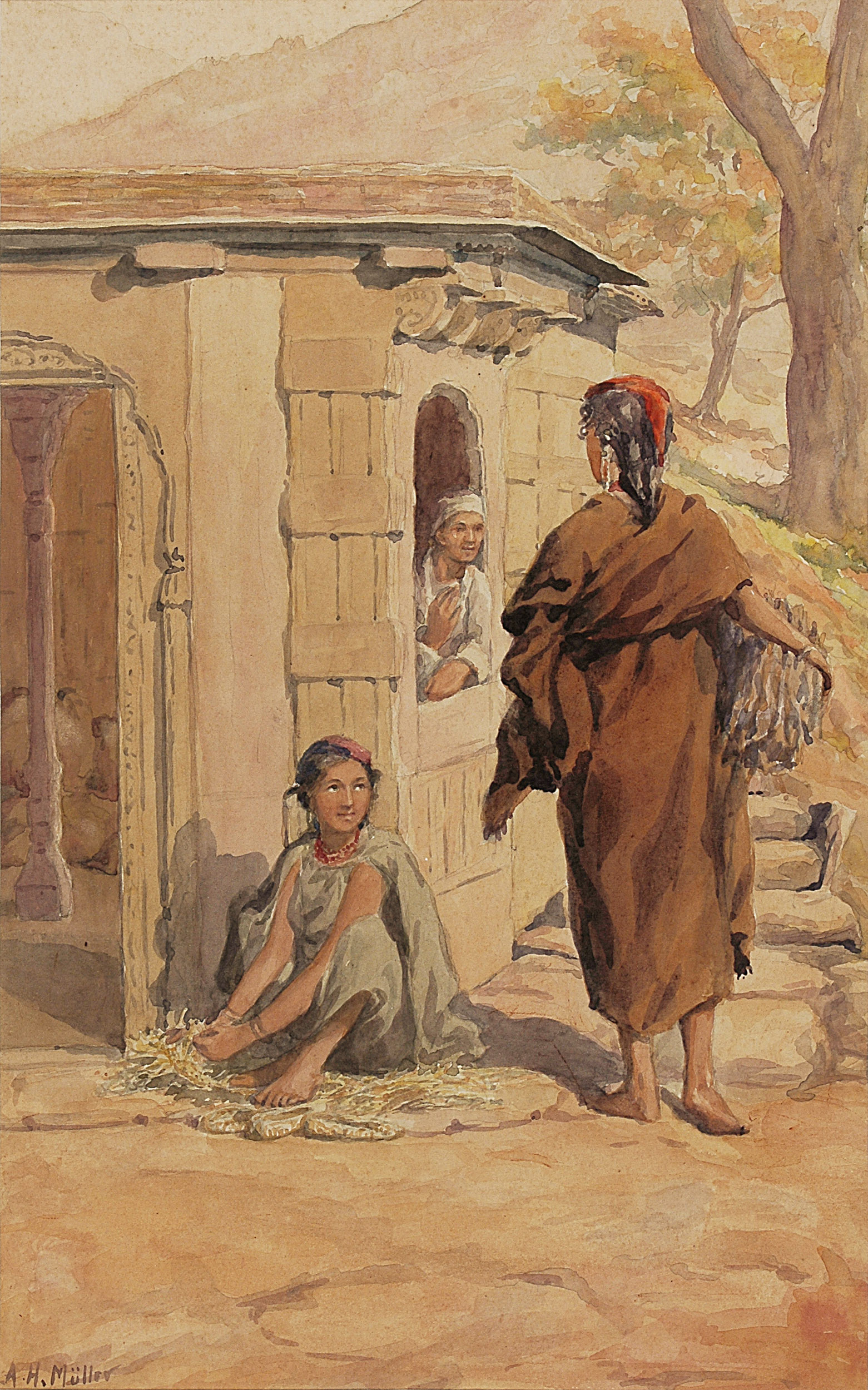
Saves a sizeable amount from his earnings at the court but is unable to work on his figure drawings and soon decides to leave Bikaner.
Sends his savings ahead to his brother-in-law, in hopes of building a home and studio in Cochin; however, later reaches Kerala to realise that all his money has been spent elsewhere.
1928
Marries his sister’s daughter, thirty years his junior, on being pressurised by family; moves to Bombay and resides in Babulal Mansion in Chowpatty.
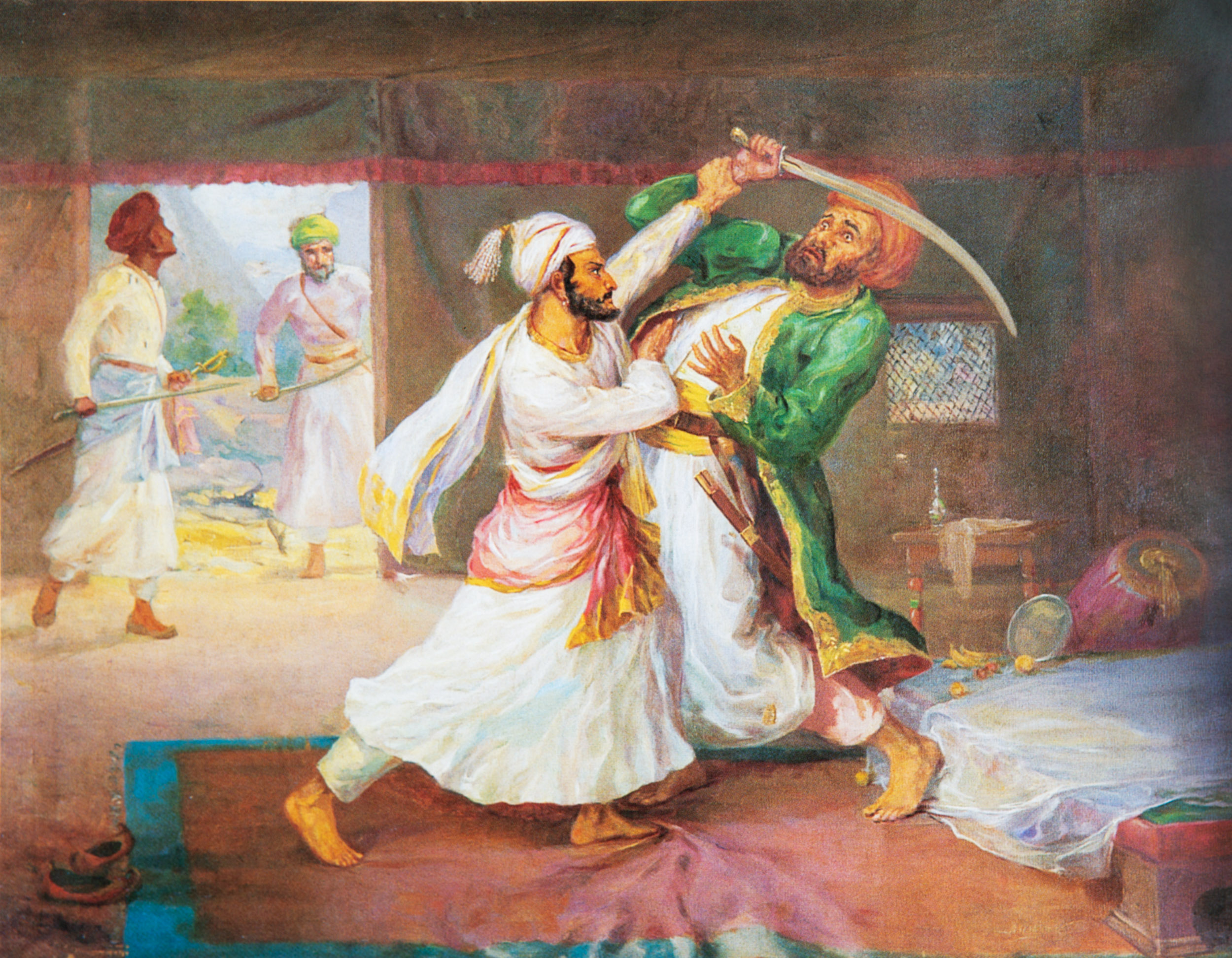
Exhibits three paintings, one of these wins a prize, and all three are sold.
His two daughters are born during his time in Bombay.
1931-1950
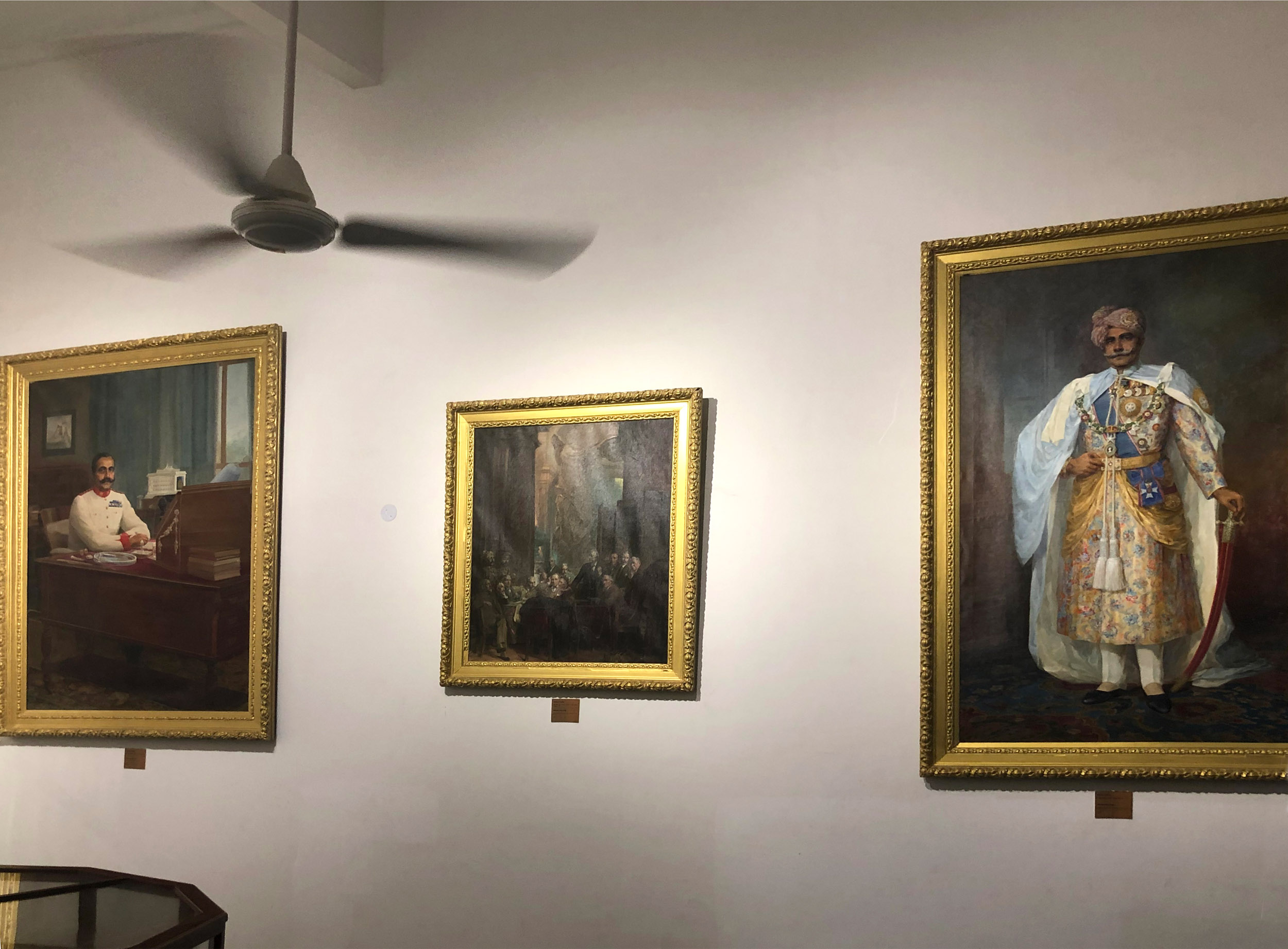
After spending three difficult years in Bombay, decides to return to Bikaner or attempt to find work in Jaipur or Jodhpur.
Paints a series of history paintings in Bikaner on important incidents involving the Rathore rulers.
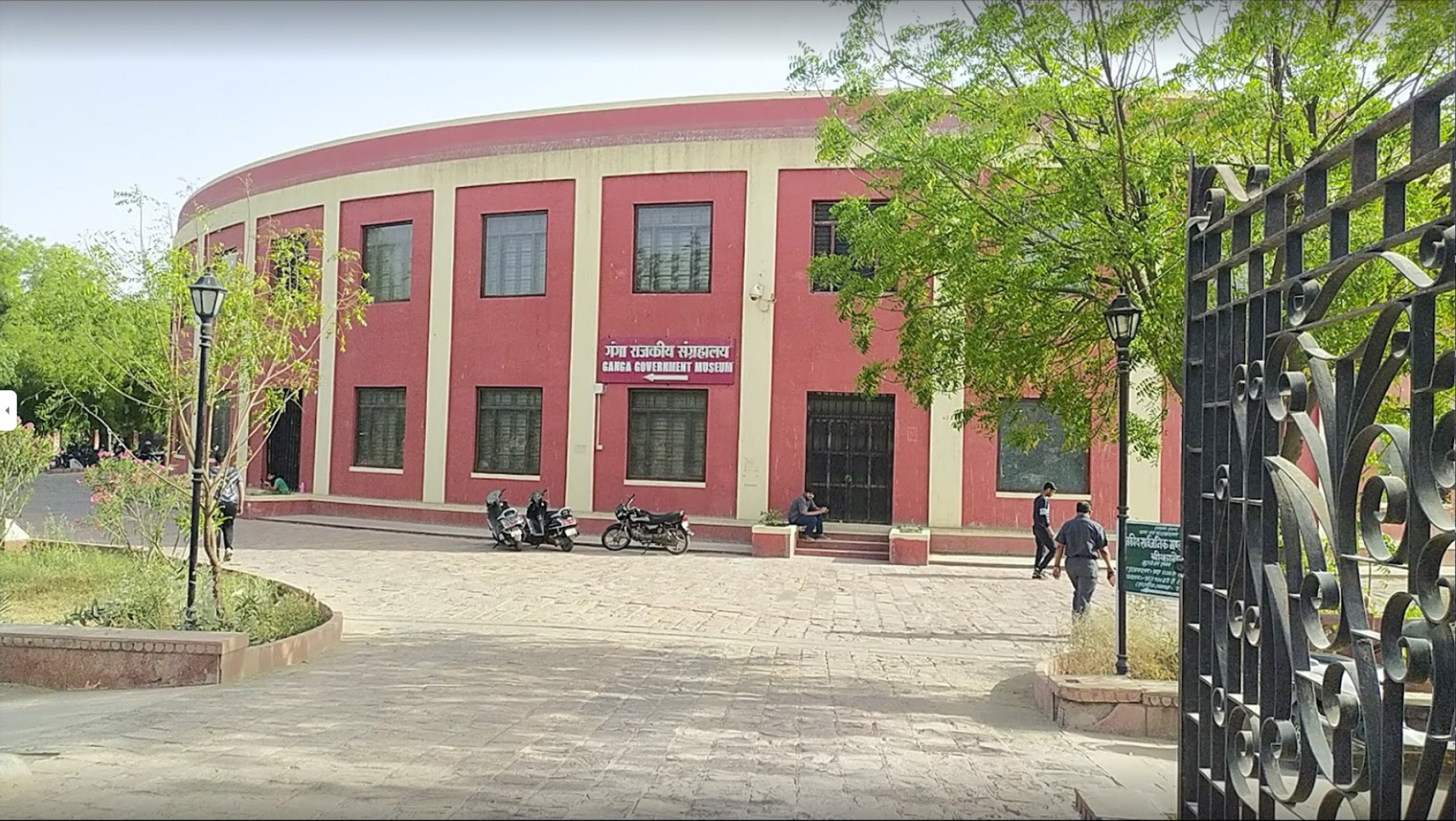
These are on display at Ganga State Museum along with a number of portraits of Maharaja Ganga Singh, also painted by Müller.
His son, Herman, is born in Jaipur. Separates from his wife.
Is appointed state artist in Jodhpur.
1950s
His daughters, Gwendoline Ellen and Winifred Rose are married to European brothers and leave for England.
Is plagued by financial troubles in Jodhpur, suffers from rheumatism and diminishing eye-sight, yet continues to paint.
Lives with friend Kinchella; yearns to visit Bombay, but is unable to afford the expense.
His friend Kinchella moves to Ferozepur and Müller is left companionless.
Müller moves to small quarters owned by a Mr. Sanghi who finances his stay through sales of paintings.
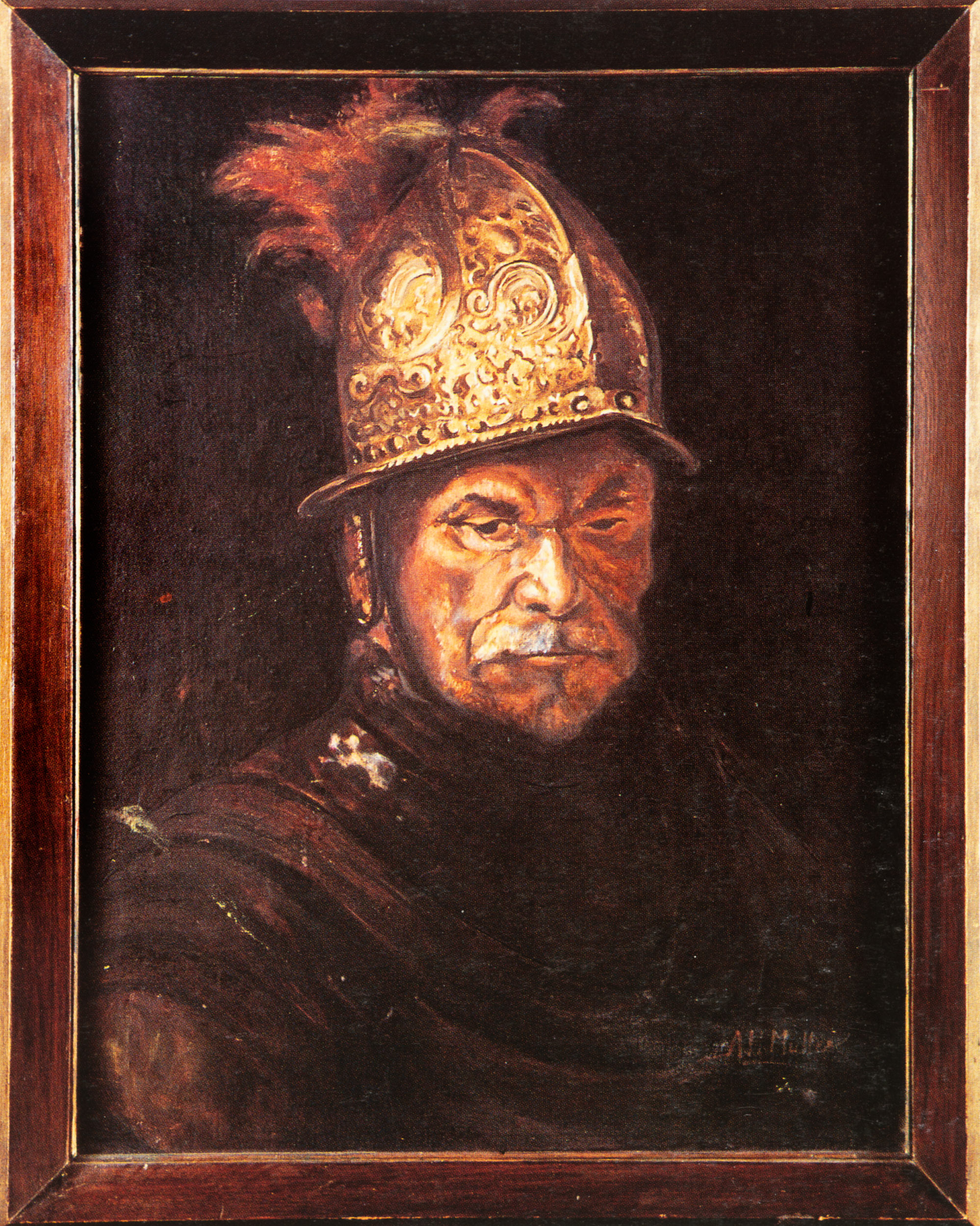
The Thakur Saheb of Jhalamand visits him in his quarters and attempts to bring him to his own residence, an aristocratic thikana in the former kingdom.
1954
The matriarch, Rajdadi Saheba of Jodhpur, arranges for her son Maharaja Himmat Sinhji, to accommodate Müller in spare but well-furnished quarters.
Müller spends his last years comfortably looked after by the royal staff, receiving commissions till the very end.
1960
Is admitted to Gandhi Hospital, Jodhpur, on account of abdominal issues; passes away at the hospital on the morning of September 24.
His son is unable to meet him before his death and moves to Australia in 1967.
Müller is survived by his great granddaughter Charlotte McGowan Griffin, a contemporary artist based in Berlin.
2003 onwards
His works are a part of multiple group exhibitions in New Delhi and Mumbai, including DAG’s Manifestations series, and shows at Jehangir Art Gallery and Lalit Kala Akademi.
Müller’s works are a part of museum collections throughout India, mainly Sanghi, Maharashtra, and Bikaner, Jaipur, and Jodhpur in Rajasthan. They are also a part of the art collection of the British monarchy and the Victoria and Albert Museum, London, among other collections.
